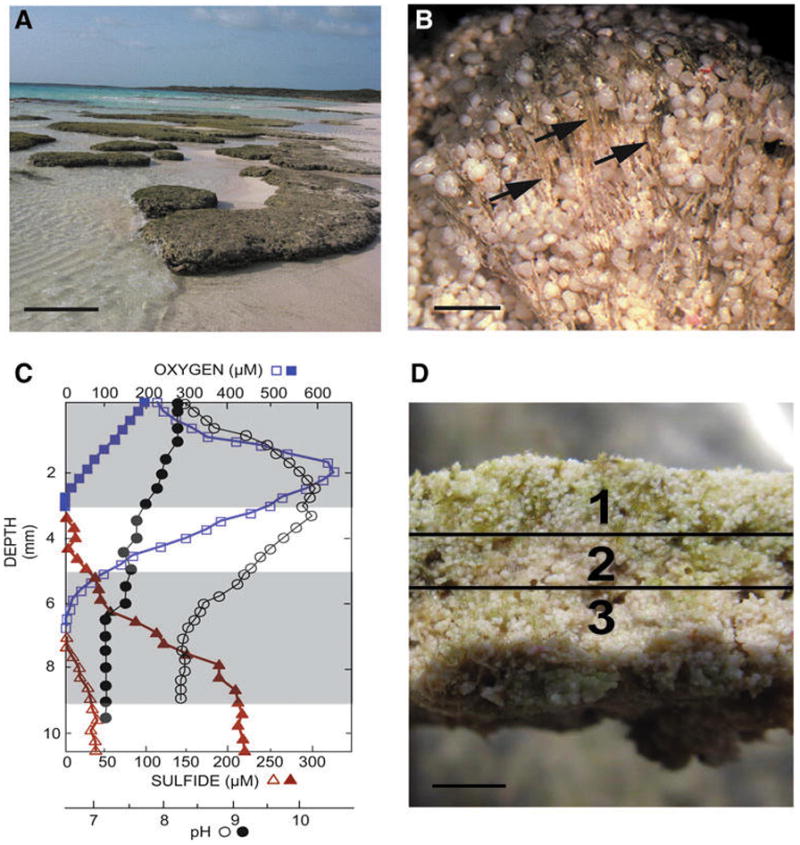FIG. 1.

The thrombolites of Highborne Cay, The Bahamas. (A) Intertidal thrombolite platforms from Site 5. Bar, 1 m. (B) Light micrograph of a thrombolite-forming button mat revealing extensive vertical assemblages of calcified filaments (arrows). Bar, 500 μm. (C) In situ depth profiles of oxygen (square), sulfide (triangle), and pH (circle) collected at peak of photosynthesis (open symbols) or respiration (filled symbols). Shaded areas reflect the targeted areas collected for analysis. Depths below 9 cm were not sampled, as that region shared the same biochemical profile as in Zone 3. (D) Cross section of button mat depicting the three spatial regions including an oxic Zone 1 (0–3 mm), transitional Zone 2 (3–5 mm), and anoxic Zone 3 (5–9 mm). Bar, 3 mm.
